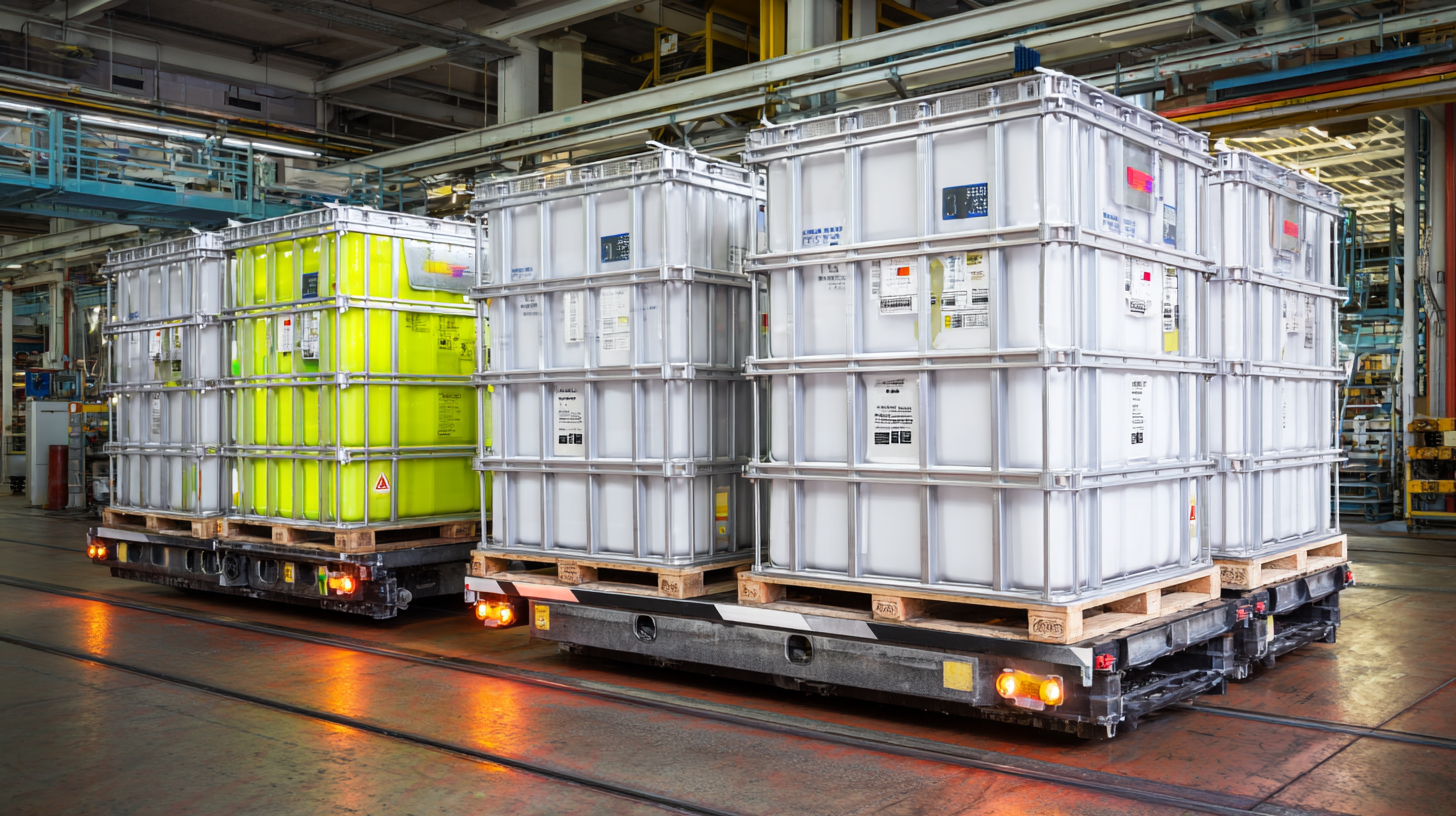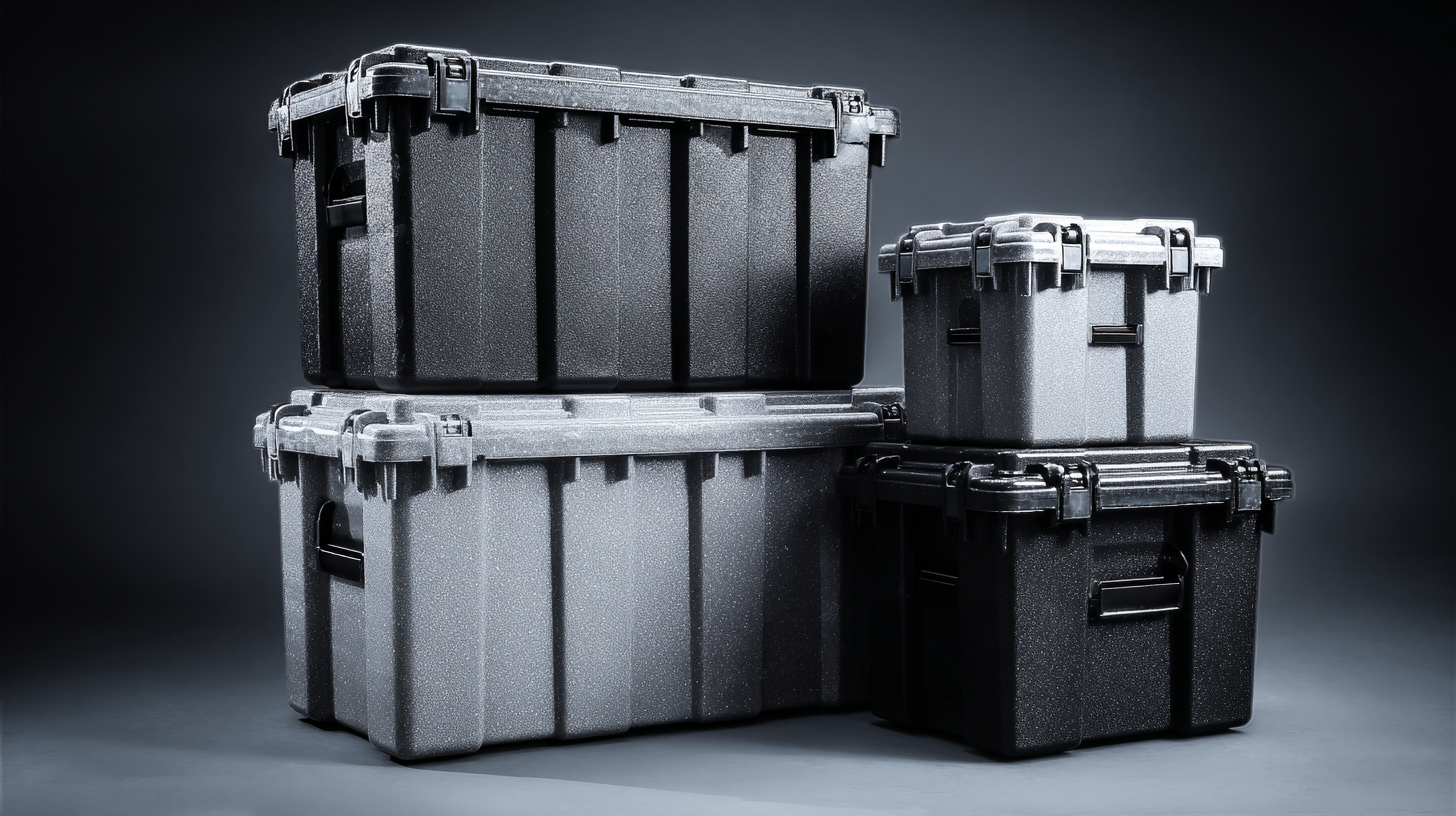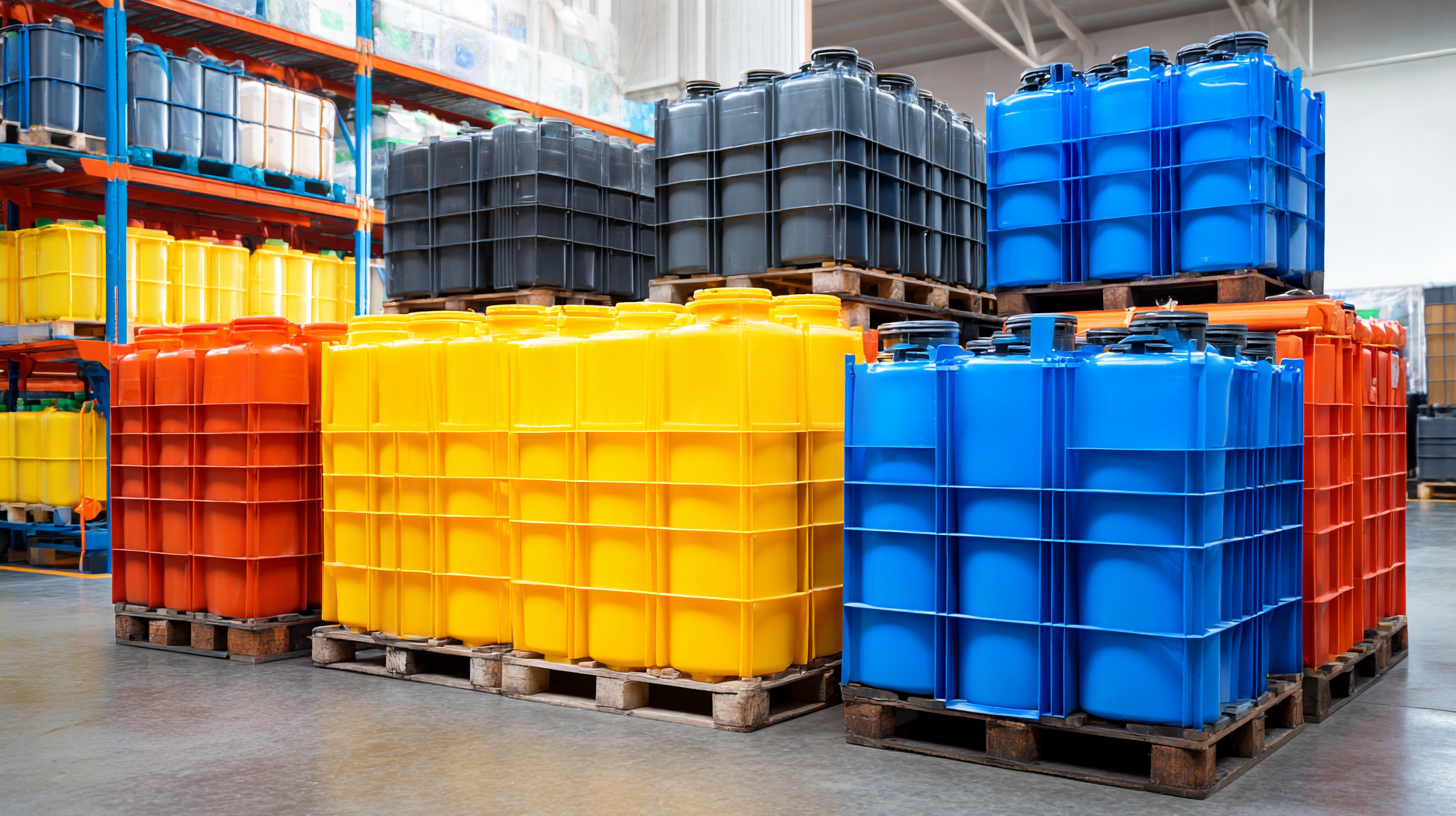
Blog
Innovative Solutions for Maximizing Efficiency with Best Plastic Bulk Containers
In today's fast-paced industrial landscape, maximizing efficiency is crucial for businesses aiming to stay competitive and reduce operational costs. One of the most effective strategies involves the utilization of plastic bulk containers, which offer innovative solutions for storage, transportation, and organization of goods. These versatile containers not only streamline logistical processes but also enhance productivity by minimizing waste and improving accessibility.

In this blog, we will explore a range of best practices and creative approaches to leverage plastic bulk containers in your operations. From choosing the right container design to implementing an effective inventory management system, discover how you can transform your workflow and achieve optimal efficiency with these essential tools. Join us as we delve into the ways that plastic bulk containers can revolutionize your business practices and drive sustainable growth.
Innovative Design Trends in Plastic Bulk Containers for Enhanced Logistics Efficiency
The logistics industry is constantly evolving, and innovative design trends in plastic bulk containers are playing a crucial role in enhancing efficiency. As businesses seek to optimize their supply chain processes, the demand for modern, high-performance bulk containers continues to rise. The intermediate bulk container (IBC) market, valued at USD 15.1 billion in 2024, is projected to reach USD 21.1 billion by 2030, underscoring the urgent need for solutions that streamline storage and transportation.

A key trend driving this market growth is the integration of advanced materials and ergonomic designs. High-density polyethylene (HDPE) and other innovative plastics not only enhance durability but also reduce the weight of containers, making them easier to handle. As trends move towards sustainability, manufacturers are also focusing on recyclable and reusable designs, which contribute to reduced waste and improved environmental impact. Additionally, features such as stackability and collapsibility provide further efficiencies in logistics, allowing companies to maximize storage space and reduce shipping costs. The synergy of design and functionality in plastic bulk containers is set to redefine operational practices across various industries.
Key Industry Statistics Highlighting the Growth of Plastic Bulk Containers in Global Trade
The global plastic bulk containers market is experiencing significant growth, driven by the rising demand for efficient packaging solutions across various industries. According to a recent report by Smithers Pira, the global demand for bulk containers is projected to reach over 9 million tons by 2025, growing at a CAGR of 4.5%. This surge can be attributed to the increasing need for safe and sustainable transportation options in sectors such as food and beverage, pharmaceuticals, and chemicals.
Additionally, the use of plastic bulk containers is becoming essential in optimizing supply chain processes. Recent industry statistics indicate that around 70% of businesses utilizing these containers reported improvements in their logistics efficiency. The International Organization for Standardization (ISO) has also endorsed plastic bulk containers for their durability and reusability, which aligns with global sustainability goals. Furthermore, with the growing emphasis on reducing carbon footprints, it is anticipated that by 2027, more than 50% of companies will prioritize eco-friendly packaging solutions, further driving the demand for plastic bulk containers in international trade.
Sustainability Practices in Manufacturing Plastic Bulk Containers: A Market Demand Shift
The shift in market demand towards sustainability has driven manufacturers of plastic bulk containers to adopt more environmentally friendly practices. As consumers become increasingly aware of climate change and waste management, they prefer products that not only meet their needs but also align with their values. This evolving preference has compelled manufacturers to innovate their processes, using recycled materials and developing biodegradable options that lessen the environmental impact.
To meet this growing demand, companies are investing in advanced technologies and sustainable materials that contribute to reduced carbon footprints. For example, utilizing post-consumer recycled plastics not only minimizes waste but also supports the circular economy. Additionally, companies are exploring alternative materials, such as bioplastics, which offer similar durability and efficiency while being less harmful to the environment. These shifts not only cater to environmentally conscious consumers but also enhance the brand image and open doors to new markets that prioritize sustainability.
The integration of sustainable practices in manufacturing is not just a trend but a necessary evolution in the industry. By embracing innovations that enhance both efficiency and sustainability, manufacturers can position themselves as leaders in the market, ultimately driving growth while contributing positively to the planet. As the demand for eco-friendly solutions continues to rise, the potential for growth in the plastic bulk container sector is vast, presenting opportunities for businesses that are ready to adapt.
Comparative Analysis of Cost Efficiency: Plastic Bulk Containers vs. Traditional Packaging
In recent years, the global intermediate container market has witnessed significant growth, with projections indicating an increase from $10.47 billion in 2025 to $15.62 billion by 2032, reflecting a robust compound annual growth rate of 5.88%. This trend has highlighted the increasing preference for plastic bulk containers over traditional packaging solutions, primarily driven by their efficiency and cost-effectiveness.
Plastic bulk containers offer a multitude of advantages when compared to conventional packaging. They are not only lighter and more durable, but they also provide better protection against damage during transport. This results in fewer product losses and reduced overall costs for businesses. Additionally, the recyclability of plastic containers aligns with the growing emphasis on sustainability, presenting an eco-friendly alternative that appeals to increasingly environmentally conscious consumers.
Moreover, the versatility of plastic bulk containers in various industries—from food and beverage to pharmaceuticals—demonstrates their adaptability and functional benefits. As companies continue to seek innovative solutions to optimize their supply chains, the comparative analysis of cost efficiency between plastic bulk containers and traditional packaging will play a crucial role in guiding packaging decisions for the future.

Technological Advancements Driving the Future of Plastic Bulk Container Solutions in China
In recent years, the demand for innovative plastic bulk container solutions in China has surged, driven by technological advancements that enhance efficiency and sustainability. The Intermediate Bulk Container (IBC) market, for instance, is witnessing remarkable growth with an increased need for efficient storage options in various industries. As companies focus on optimizing their logistics and reducing costs, IBC rental services are gaining popularity, providing a flexible and economical alternative for short-term use.
Moreover, the broader packaging market is also evolving, with projections indicating significant expansion in segments like feed packaging and converted flexible packaging. The global market for bulk packaging is anticipated to surpass USD 32.1 billion by 2031, reflecting the industry's shift towards more adaptable and sustainable packaging solutions. The incorporation of advanced materials and design technologies not only caters to the growing consumer demand but also aligns with global sustainability goals, establishing a path for future growth in the plastic bulk container sector.
